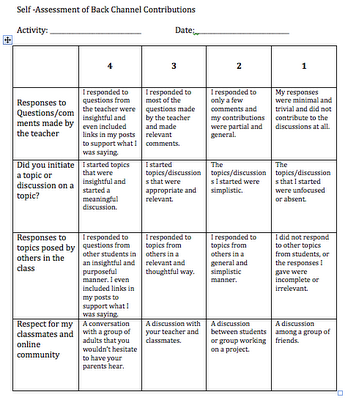Picture the old class: students struggling to decifer the original text, answering mundane questions, and tuning out on a daily basis because this "Shakespeare stuff" was "too hard". Students sat through note-taking in a lecture about the life and language of Shakespeare. Students did a Reader's Theatre in front of the class and that was it. A couple of quizzes and tests later and a final essay and we're done the unit!
Jump to my unit this time with technology infused and we are starting with Shakespeare's Life and Times podcasts. Students are given a topic, and must create a 1 min enhanced podcast with complimentary photos and Elizabethan era music. The podcasts are then posted on the class Shakespeare wiki for download and studying. There will end up being 22 separate podcasts for listening and studying from. I have never done this research style project this way, but so far it's been well received. While researching students were also asked to add to their delicious bookmarks and add our class tag for the unit (LA9Shake). Students are not catching on to Delicious as I would have liked, probably because I don't use it as much as I should. At some point all of the web tools out there reach a saturation point in your life and you're not as open to some things. Delicious is amazing, but I just don't find I have the fortitude to use it.
Taking information from the podcasts, I will use their research to make quizzes for the unit. Once they are handed in tomorrow I will post them on our class Shakespeare wiki. Students will be responsible to upload more information as the unit progresses.
Technology wins again as students use the web to access modern language versions beside the original text, which helps with answering their knowledge and comprehension questions. So should students still answer questions? It many cases, yes, but many teachers live by "chapter questions" for learning which I feel can become a crutch, a safety net, and a distraction from deeper themes that can be explored within literature.
Today we finished the podcasts and watched the first 15 minutes if the 1960's version of Taming of the Shrew. Instead of Twitter we tried Chatzy with a private room and had great success. If I had a choice between Twitter and Chatzy for student backchannel, Chatzy wins hands down. Great control features and the ability to clear the chat room make it an excellent choice for educators. It's immediate and is not plagued by a bloated whale screen! If you're looking for a longer term discussion over a period of classes or really like to have outsiders participate then Twitter is the choice. I noticed today though that students didn't respect each other as much with their comments and tone due to the fact that they knew the chat room was private and password protected. After 5 minutes I stopped the movie, cleared the log and reviewed the backchannel rubric I developed for my Twitter adventure a couple weeks ago.
With podcasts finished, I'll be using many of the teaching strategies described in Barrie Bennett's book Beyond Monet. In the next few weeks we'll be creating online mind-maps and concept maps, studying original source documents to learn about attitudes towards women in 16th Century vs. the 21st Century, and using our Kodak Zi6 cameras to record, edit and post modern interpretations of selected scenes in iMovie.
I'm also contemplating the idea of students doing an audio essay instead of a traditional hand written essay. Has anyone done this before? Ideas on how to approach/plan it? How have you used podcasting in your teaching?
Stay tuned!

